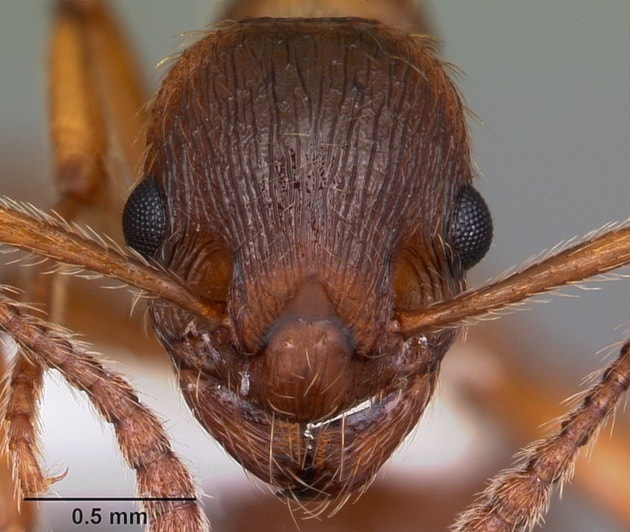They're here.
European fire ants that swarm and bite if their nests are disturbed can render some backyards practically unusable.
Chilliwack is one of the locations in B.C. where invasive European fire ants have been confirmed, so a public information session has been slated for April 22 at Chilliwack secondary to raise awareness.
Robert Higgins, a researcher from Thompson Rivers University, will be in attendance. As a myremecologist who specializes in ants, Higgins pinpointed their arrival in the province of B.C. at about five years ago, after he positively identified a specimen from Agriculture Canada.
"I had been suspecting this ant would show up," Higgins told the Progress last year in an interview.
Moving contaminated soil, plants or mulch is usually to blame for the spread of this invasive species, which is actually displacing other native species of ants.
EFAs like moist environments like under rocks, moss or along roots.
Residents will learn about how to identify them, prevent the spread and hear about some promising treatment options at the event next Wednesday at the high school.
VanDusen Botanical Gardens officials have confirmed they have the fire ants on their site, and have been experimenting with trial methods to get rid of them.
Higgins and VanDusen reps will be making presentations at the April 22 event, and city officials are also inviting landscapers and garden centre reps, along with realtors.
A report by B.C. Ministry of Environment's Ecosystems Branch — from ecologists, environmental economists and city planners — estimates that European fire ants could end up costing the province more than $100 million annually in 20 years, not including decline in property values of affected homes.
The steady march of this invasive type of red ant is proving surprisingly difficult to to stop outright, and experts are now experimenting with ways to slow down the spread. Commercial insecticides don't work that well unfortunately, according to Higgins, but with early detection, they can be baited from the nests with boric acid and coaxed out.
The challenge is the layered structure of the elaborate nests with up to 15 queens in every one, making eradication of the European fire ant next to impossible.
Anecdotal reports on social media about the presence of the European fire ant in Chilliwack, cite local streets such as Maple, Hazel, Brooks, Kent, Princess and Charles where residents believe they are present.
One Chilliwack site where the presence of European fire ant colonies have been confirmed covers a five-block radius. Higgins said the last time he was in Chilliwack with other researchers in 2012, they mapped out the distribution of EFA nests in that one area.
These are not your typical backyard ants. Colonies can have up to 1000 workers and 20 queens.
A report by B.C. Ministry of Environment's Ecosystems Branch — from ecologists, environmental economists and city planners — estimates that EFAs could end up costing the province more than $100 million annually in 20 years, not including decline in property values of affected homes.
Since they are introduced and spread through garden and landscape materials, such as potted plants, mulch and soil, reducing the impact takes coordination and efforts of all homeowners.
According to provincial officials, to minimize the impact of fire ants and help stop their spread:
• Refrain from moving soil, mulch or plants from infested areas; instead, bait colonies with boric acid. Experts also advocate soaking roots of purchased or traded plants in cold water before transplanting.
• Make yards less attractive to European fire ants by reducing exposed soil or yard clutter especially scattered rock and woody debris.
• Raise awareness about European fire ants in the community, since they can be confused with native ant species which are not harmful to the environment.
Not every red ant is an EFA, according to experts.
European fire ants (EFAs) are fairly small, about 4-5mm, and can be confused with thatching ants (formica ravida), and Manica invidia, which are larger (thatching ants 8mm; Manica invidia 5-7mm), say provincial reps. The European fire ant has two waist segments, whereas the native ant only has one, and two backward pointing spines and stinger that's visible with a magnifying glass. Residents trying to identify fire ants on their property can send a sample for free identification through the Ministry.
City officials cannot respond to reports of European fire ants on private property as it falls under the responsibility of the home owner, and details about identification can be found here and through the Invasive Species Council of B.C. at: http://www.bcinvasives.ca/invasive-species/invasive-organisms/european-fire-ant
The European Fire Ant Public Info Session hosted by City of Chilliwack is April 22 at 7 p.m. at Chilliwack secondary in the Alumni Hall, Room 1019. Doors at 6:30 p.m.
